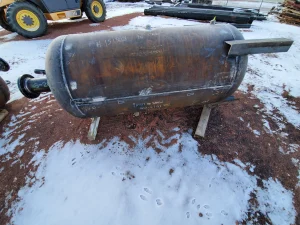
Understanding What Is on the TIG Welding Certification Test
You may be fresh out of welding school, or have hands-on experience and want to advance your career. Preparing for a Gas Tungsten Arc Welding (GTAW) exam often raises the question: what is on the TIG welding certification test, and how can you succeed? Many feel uncertain about the required skills, materials, and technical knowledge. The good news—it’s easier when broken down step by step. Exploring tig welding certification classes helps you prepare. TIG’s precision makes certified welders valuable in industries demanding high-quality work like aerospace and food-grade equipment.
What is on the TIG welding certification test
The TIG welding certification test typically measures your ability to handle various weld joints, metal thicknesses, and techniques in a controlled format. Although each testing authority (such as the American Welding Society or a state licensing board) may have slightly different requirements, the core foundation is often the same. You will demonstrate your TIG welding technique on metal coupons small pieces of metal specifically prepared for a test. Examiners then evaluate the weld for defects. Enrolling in tig welding certification classes can help you master these requirements.
Test structure basics
Most TIG certification exams start with a written or online theoretical component. It gauges your understanding of welding safety protocols, equipment settings, shielding gas types, and fundamental welding principles. After the theory section, you will tackle the hands-on portion. Here, you will be required to:
- Show you can properly set up and handle the TIG welding machine, including the power source, the gas supply, and the choice of filler rods.
- Demonstrate correct tungsten electrode selection and preparation.
- Weld a specified joint (or multiple joints) under standard conditions. Common joints you might encounter include butt joints, lap joints, or T-joints in flat, horizontal, or vertical positions.
Once your weld is complete, the test coupon is typically cut into sections or bent to check its structural integrity. Examiners want to see clean weld beads without internal flaws or cracks.
Practical welding techniques
Your skill in practical welding is the heart of the TIG test. Testing guidelines often specify a certain range of processes, such as:
- Tack welding: You will briefly fuse two pieces at multiple spots to hold them together. This step demonstrates your ability to control the arc’s heat precisely.
- Root pass: The first pass that fuses the base metals together at the joint’s root. This pass is crucial because it sets the weld’s foundation.
- Filler passes: Additional layers of weld material build up the joint’s thickness, ensuring it will withstand pressure or stress without failing.
Examiners assess steadiness, consistency, and weld bead uniformity during each pass, focusing on torch angle, arc length, and travel speed. A smooth, even bead with minimal spatter or undercut increases success. Strengthen these skills by enrolling in tig welding certification online, combining theory and guided practice to prepare effectively for both written and hands-on exam requirements.
Materials and thickness options
The TIG process works on metals like stainless steel, carbon steel, and aluminum. Certification exams typically cover 1/16-inch to 3/8-inch ranges. Some tests add endorsements for multiple materials, and “variable thickness certifications” often appear on your card. Preparing through tig welding certification online helps you practice diverse materials and thicknesses while mastering the precision needed to meet exam requirements.
If you are unsure about the specific thickness or metal type required for your exam, consider checking with the testing facility or your instructor. Different programs, such as TIG welding certification or how to get TIG welding certification, often list detailed prerequisites. Knowing these details helps you practice with the right materials so that you’ll feel perfectly at home when the day comes.
How to prepare effectively
Earning your GTAW welding certification demands more than just technical skills, and you can set yourself up for success by combining targeted study with practical, hands-on experience. Below are strategies to help you ramp up your readiness and face the exam with confidence.
Study resources
- Official guidelines: Many certification bodies publish guidelines that outline the test’s scope. These may specify welding positions, material thicknesses, or the required weld joints.
- Welding textbooks: Doing some last-minute review in well-known welding textbooks or online resources can refresh your knowledge of basic metallurgy, safety practices, and arc physics.
- Practice tests: Whenever possible, try a practice exam simulating real test conditions. Practice tests show where you might be short on knowledge, allowing you to fill those gaps early.
If you are considering formal classes, welding certification classes can offer structured lessons and guided practice. For convenience, welding certification online sometimes provides interactive modules to cover exam theory. Just be sure to balance virtual learning with actual hands-on practice.
Practice and repetition
TIG welding is often described as “the welder’s ballet,” demanding exceptional control over both heat and filler metal. Unlike other processes, you use both hands independently—one for the torch and one for the filler. For many beginners, that transition is the hardest to master, but improving these skills is essential for excelling in GTAW welding certification and building long-term confidence.
- Start slow: Focus on stringer beads on scrap metal to perfect your torch angle and feeding technique.
- Add complexity: Gradually introduce new joint types, thicker materials, or out-of-position welds, such as overhead or vertical.
- Check your work: Cut and etch your practice welds to visually inspect penetration and detect hidden flaws.
Repetition also builds comfort. The more you practice, the more natural controlling your wire feed and managing your travel speed becomes. Aim for consistent arcs, minimal tungsten contamination, and a clean bead appearance.
Common mistakes to avoid
Even seasoned welders fall into certain pitfalls under pressure, particularly during an official exam. You can steer clear of unwanted mishaps by understanding common errors and how to prevent them.
- Underestimating safety rules. Failure to follow safety guidelines (like wearing proper protective gear, cleaning your work area, or verifying equipment settings) can lead to automatic failure.
- Rushing the root pass. Haste can lead to incomplete fusion, lack of penetration, or irregular bead shape in the root pass. Slow down, and focus on a steady progression, especially in your first pass.
- Overheating the metal. TIG typically uses lower amperage than other processes, but it still generates significant heat. Keep an eye on your welding pool, and adjust your travel speed or amperage to prevent warping or burn-through.
- Choosing the wrong tungsten size or filler rod. Selecting the correct tungsten diameter (often 3/32-inch or 1/8-inch) for the metal thickness is vital. Too large or too small can cause poor arc stability.
- Inconsistent torch angle. A shaky or inconsistent torch angle leads to uneven bead shapes. Consider bracing your torch hand on the table or coupon if feasible, so you keep that angle rock-steady.
If you spot a recurring issue in your practice welds, consider refining your approach under professional guidance. Training sessions that focus on how to pass TIG welding certification test can be especially helpful, as they typically highlight these types of mistakes.
What is on the TIG welding certification test
The TIG welding certification test involves written and hands-on exams evaluating tungsten preparation, rod handling, penetration, and bead quality. Practice on test coupons, study resources, and careful preparation reduce nerves. Reviewing standards from your certification authority ensures readiness. Consistency, attention to detail, and dedication improve your chances of passing successfully.
Ready to Ace the TIG Welding Certification Test?
Passing the TIG certification can open doors to better jobs, higher pay, and career advancement. Don’t wait start practicing today and secure your future in welding!
Frequently Asked Questions
1. How to pass tig welding certification test?
You can pass a TIG welding certification test by practicing consistent weld quality, understanding welding symbols, and meeting the required industry standards.
2. Where to take tig welding certification test?
You can take a TIG welding certification test at accredited trade schools, technical colleges, or authorized welding testing centers.
3. Can I use my own equipment?
Some centers allow personal gear if safe; machines provided. Always confirm rules beforehand to prevent surprises.
4. Do I need multiple thickness qualifications?
Career goals matter; some employers need single thickness, others prefer multiple certifications across metals and ranges.
5. Are AWS certifications different from state-regulated ones?
AWS sets recognized standards; some states have unique protocols, so always confirm regional certification requirements.
6. How long is a TIG certification valid?
Certificates last six months to a year; you must verify continuity by proving consistent welding quality.
7. What if I fail the exam?
Exam retakes are common; use rescheduled attempts to fix weaknesses like root pass or torch angle.
Key takeaways
- TIG (GTAW) certification generally includes both a written exam and a hands-on welding performance test.
- Thorough prep involves studying safety guidelines, process theory, and equipment handling.
- Practical practice is essential—start with simple joints, then progress to challenging positions and materials.
- Common mistakes include poor root pass execution, overheating, and inconsistent torch angles.
Related Blog Post


Where to Get Welding Certification Online for Your Career

How to Get Welding Certification Online Without Breaking a Sweat

Can You Get Welding Certification Online? Here’s the Truth

